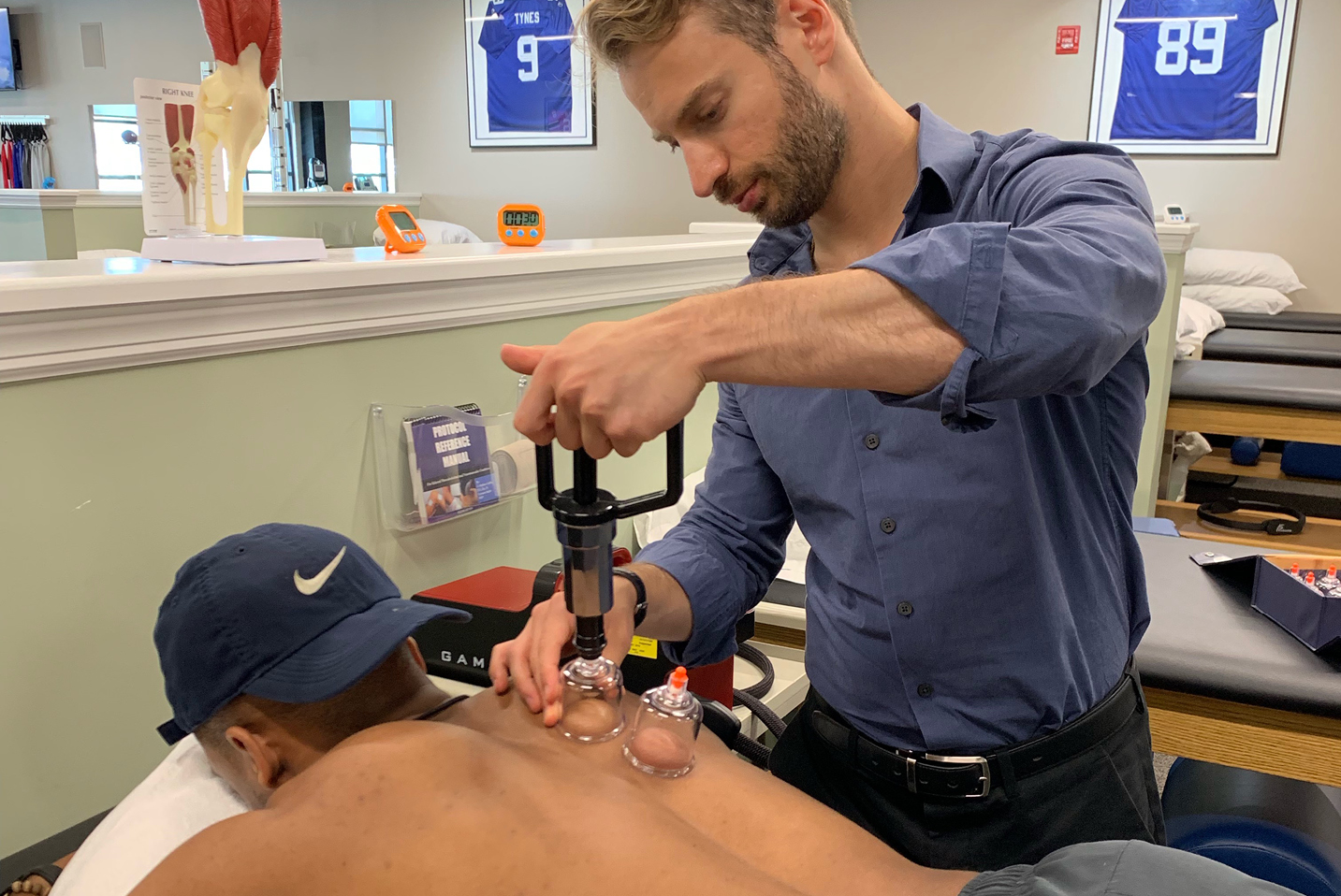
Myofascial decompression (MFD), also known as “cupping,” is a traditional Chinese medicine that has been practiced for more than 2,000 years. Notably, professional athletes including Michael Phelps and the U.S. Women’s Gymnastics team have used cupping as part of their maintenance and recovery programs.
What is Cupping?
Cupping is a manual therapy technique in which small cups are carefully placed on injured areas of the body for several minutes at a time. Multiple cups can be placed on the skin at the same time, depending on the condition that is being treated.
Potential Benefits of Cupping
Tissue restrictions (particularly in the fascia—the connective tissue beneath the skin that attaches, stabilizes, encloses, and separates muscles) can result in decreased range-of-motion, asymmetry, and sub-optimal muscle performance.
The theory behind cupping is that the suction will lift the skin, creating more blood flow to the underlying tissue to promote healing. By lifting and stretching the fascia, cupping may help to stimulate the chemical breakdown of toxins that delay muscle and tissue healing—this process reduces inflammation and can help facilitate normalized movement.
Cupping may be beneficial in treating a variety of conditions, including:
- Lower back pain
- Neck pain
- Fibromyalgia
- Migraines
- Soft tissue injuries and restrictions
Note: Cupping therapy can result in deep red circles where the cups were placed. While these visible circles can last for a week or more, they generally shouldn’t cause any pain other than some minor initial soreness.
At EXCEL, cupping is one of many modalities that may be used as part of your individualized physical therapy treatment program, if the therapist deems it appropriate.

Jonathan Zaid, PT, DPT
Hoboken Clinic Director
Jonathan holds a Doctorate in Physical Therapy from Franklin Pierce University. His goal is to facilitate a game plan to help his patients achieve their personal goals. Whether it’s running a marathon, working out at a local CrossFit class, or just performing daily tasks, Jonathan designs individualized treatment plans based on the needs and goals of each patient.
The medical information contained herein is provided as an information resource only, and does not substitute professional medical advice or consultation with healthcare professionals. This information is not intended to be patient education, does not create any patient-provider relationship, and should not be used as a substitute for professional diagnosis, treatment or medical advice. Please consult with your healthcare provider before making any healthcare decisions or for guidance about a specific medical condition. If you think you have a medical emergency, call your doctor or 911 immediately. IvyRehab Network, Inc. disclaims any and all responsibility, and shall have no liability, for any damages, loss, injury or liability whatsoever suffered as a result of your reliance on the information contained herein.
